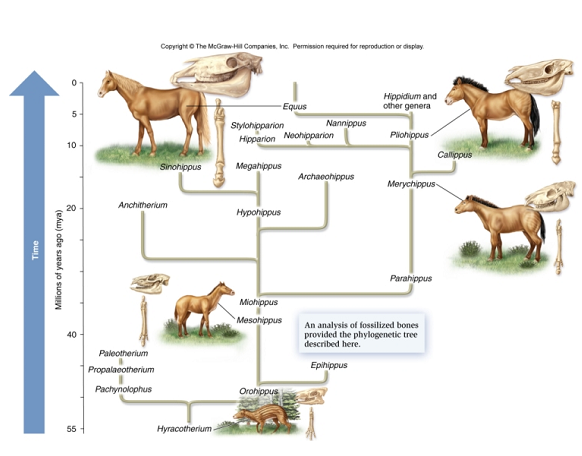The tree in the figure is based on which type of traits, and what is the name of the genus for the most recent horse?

A. Genetic (DNA): Orohippus.
B. Morphological: Equus.
C. Molecular: Equus.
D. Genetic homology: Pliohippus.
E. Morphological: Hyracotherium.
B. Morphological: Equus.
You might also like to view...
Interbreeding between Neanderthals and modern H. sapiens likely took place in ____ around _____ years ago, before H. sapiens spread around the world
A. the Middle East; 60,000 B. Africa; 60,000 C. the Middle East; 200,000 D. Africa; 200,000 E. the Middle East; 1.4 million
The evolution of organisms that use oxygen in their respiration was possible only because of the action of a group of bacteria that produced oxygen and changed the Earth's atmosphere from an anoxic one to one rich in oxygen. That group of bacteria was:
A. Cyanobacteria B. spirochaetes C. Proteobacteria D. Staphylococcus E. Actinobacteria
Activated complement brings about the death of a microbe when it ________
a. mediates interactions between immune cells only b. activates a chemotaxic response in certain phagocytic cells only c. all of the choices d. organizes into a membrane pore and causes lysis of the cell only
The accompanying figure shows a pedigree and the results of a Southern blot analysis of the ?-globin gene for four family members (II-1, II-2, II-4, and II-5). III-2 was just born and neither her health nor her DNA has been analyzed
The figure also shows a restriction map of ?A and ?S alleles and the location of three DNA probes (A, B, and C). If III-2 is analyzed by Southern blot using the same probe(s) as that used on other members of the family, what is the probability that the result will be only one band? A) 0 B) 1/9 C) 1/6 D) 1/4 E) 2/3